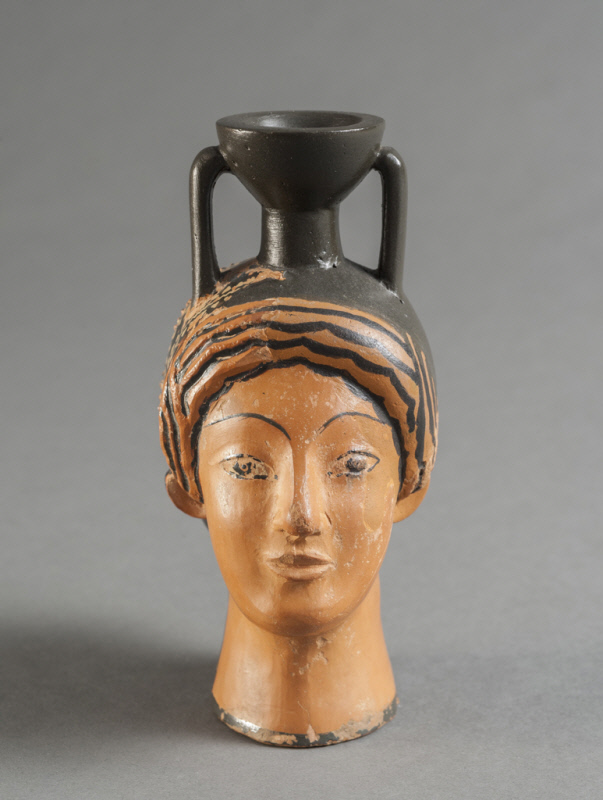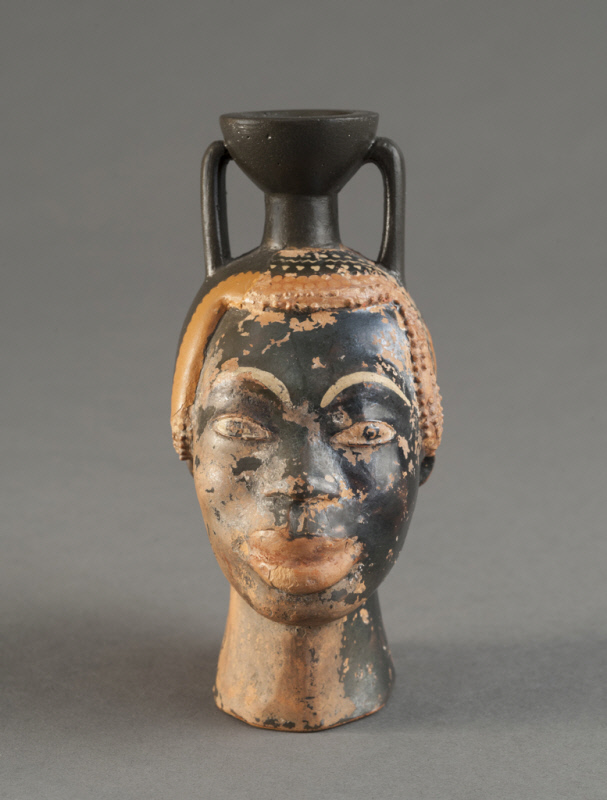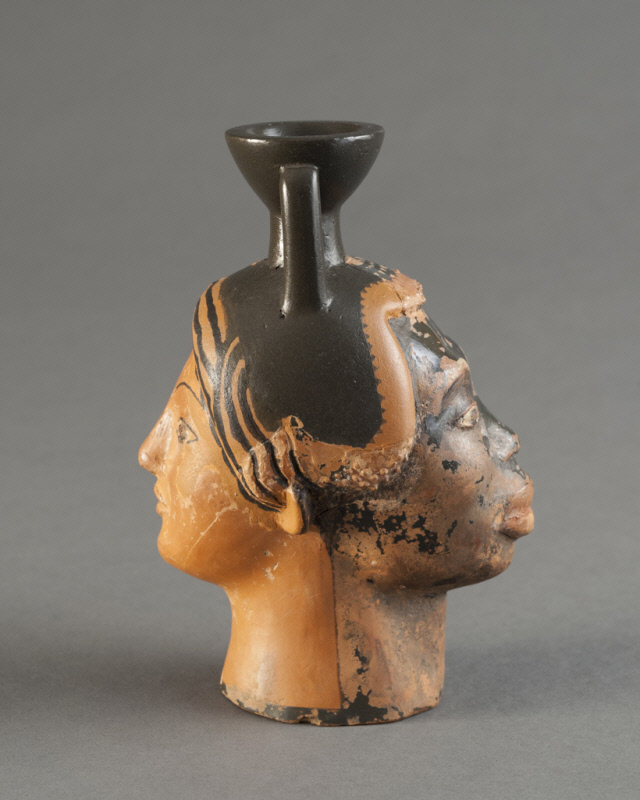This two-headed vessel is known as a Janiform vase, an anachronistic term referring to the Roman god of time and duality, Janus, who was usually depicted with two heads—one looking forward and one looking behind. This vase once functioned as an oil flask (aryballos, plural aryballoi) and takes the form of two heads facing opposite directions. One is the head of a Greek woman and the other a Black African man, a juxtaposition that contrasts male and female, as well as skin tone. Both heads end at the neck, the bottom of which is flat and serves as the foot of the container. Each face looks serenely outward and has a slight lift to the corners of the mouths in an Archaic smile, a feature of Greek art from the Archaic period (600–480 BCE). The female head has modeled wavy hair, with added lines in black slip. The male head has short curly hair, which includes small portions of added clay. Additional pigments indicate an ivy-leaf pattern on the heads (probably representing wreaths), the eyebrows of the male, and likely the eyes of both figures. The ivy wreaths may suggest an association with Dionysos, the Greek god of wine. The spout and handles are modern restorations, as are the flat parts of the hair. Areas of the black slip have flaked off from half of the male figure’s face and neck as a result of the thousands of years the vessel spent in the ground.
Scholars separate Greek head-shaped vases into several classes or groups. Vases that take the form of a single human head are not very common among Athenian pottery, but several hundred examples are known. Janiform vases are a subset of these head vases, and this example most likely belongs to the largest group of Athenian head vases called the Cook Class. The figures represented in this group include heads of Greek and Black African women, Black African men, satyrs, and the hero Herakles. Each head was made using a mold, while the other portions of the vase, such as the neck and mouth, were produced on the potter’s wheel. The majority of the Athenian head vases, including Janiform examples, are called kantharoi (singular kantharos). These types of cups were used to drink wine and are particularly associated with Dionysos and the symposium, an aristocratic drinking party. Aryballoi primarily date to the end of the 6th century BCE, which is early in the production of head vases. The aryballoi were multifunctional objects that could be used in a variety of contexts and most likely contained scented oils to be used as perfumes.




